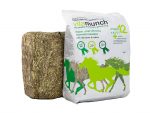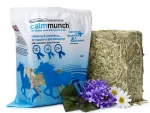1 year product guarantee
Free delivery on most orders over £40
Rated 4.9/5 stars on Feefo

Researched & tested products

Innovating for over 20 years!
Supporting Redwings Horse Sanctuary & Brooke
Feefo Gold Trusted Service Award Winner
Get more time to pay with Klarna
Feeding at Variable Heights in the Stable
Why should you be feeding at variable heights?
Sponsored Rider Judy Harvey uses different feeding heights in her stable after attending the Equine Sports Science Seminar with Centaur Biomechanics, where Sharon May-Davies presented about the requirement for domesticated horses to have variable feeding positions.
While horses are grazers, if you watch them in the field, they don’t just have their heads down and eat grass. If they have a hedgerow you will quite often find them borrowing away to find little ‘treats’, or they might even eat some other vegetation at varying heights. Horses in the wild graze for 80% of their time, and browse for 20%.
Category
Advice, Equine Behaviour, Feeding and Nutrition, Horse Care & Equipment, Keeping your horse happy, Nutrition, Real StoriesWhy is that important?
The varying positions they have to reach and get to allows them to use their necks, backs, lips and teeth in ways that some stabled horses never get to. These movements not only help keep their bodies supple, but also provides mental stimulation for them too - especially if they are only seeing the same 4 walls of their stable.
Another reason for varying heights and feeding methods is so that they can use varying angles of their jaw, which is essential for their dentition.
To summarise:
- It imitates the browsing position. Horses in the wild graze for 80% and browse for 20%.
- Encourages them to use their backs, necks, lips and teeth in ways that stabled horses rarely do – keeping them supple.
- For Mental stimulation
- Essential for their dentition
How can you achieve variable heights?
These are just a few ideas that you can combine to encourage different feeding levels:
- Hay on the floor
- Haynet at a different height
- Water at a different height
- Munch and Munch net, preferably swinging, so that the horse can be challenged and provide mental stimulation
Why Munch?
Especially in winter, most of us are unable to turn our horses out as much as we'd like to and Munch blocks provide nutrition, entertainment and variety for the stabled horse, while being high in fibre and low in sugar.
The Munch Net is perfect to hang a Munch block high up, so that the horse has to manoeuvre it around to get a bite. This is useful to mimic hedgerow browsing in the field.
Related Products
View all products-
 Munch Net£4.50 View product
Munch Net£4.50 View productMunch Net
Extend eating times and help prevent boredom with this small-holed…
-
 Vitamunch Marvellous Meadow£4.50 – £22.50 View product
Vitamunch Marvellous Meadow£4.50 – £22.50 View productVitamunch Marvellous Meadow
Keep your horse occupied for longer with this high fibre,…
-
 Calmmunch£4.50 – £22.50 View product
Calmmunch£4.50 – £22.50 View productCalmmunch
Chill out and keep your horse occupied with a calmmunch…
